Overview
| Data Structure Quick Summary | ||||||
|---|---|---|---|---|---|---|
| Complexity? | Performance Impact? | Saves to Database? | Configuration Folder? | Entity Framework? | Folder Behavior? | Process Tracking? |
| High | High | Yes | Yes | Yes | Yes | Yes |
The Case Entity Data Structure is a folder-based data type that has multiple states that can be defined. It is not limited to following a linear process but can move from one state to any other state. The Case Editor allows users to define actions that apply to each state. The folder type behavior allows users to build Dashboards or store other data such as Entities or Assignments.
Creating A Case Entity
- In a Designer Folder, select CREATE DATATYPES/INTEGRATION from the Global Action Bar.
- In the Create DataTypes/Integration window, select Case Entity.
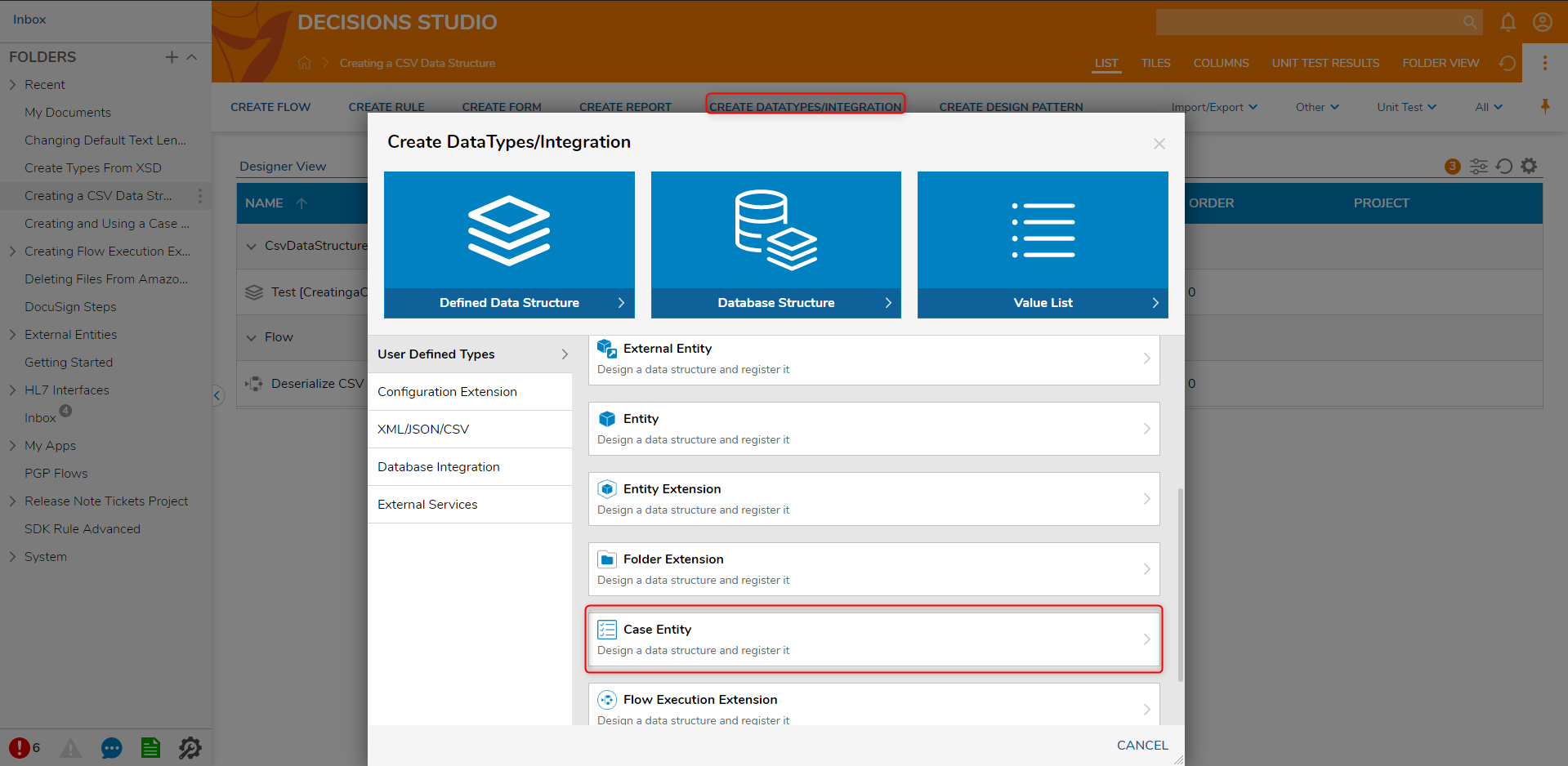
- In the resulting Case Entity window, declare a name for the Case Entity [EmploymentApplication].
- Then, declare data fields by inputting a Name and selecting a Type. This example uses the Names 'ApplicantFirstName', 'ApplicantLastName', 'ApplicantEmail'. 'YearsOfExperience', 'HasResume', and 'RequestedSalary' all with the String Data Type.
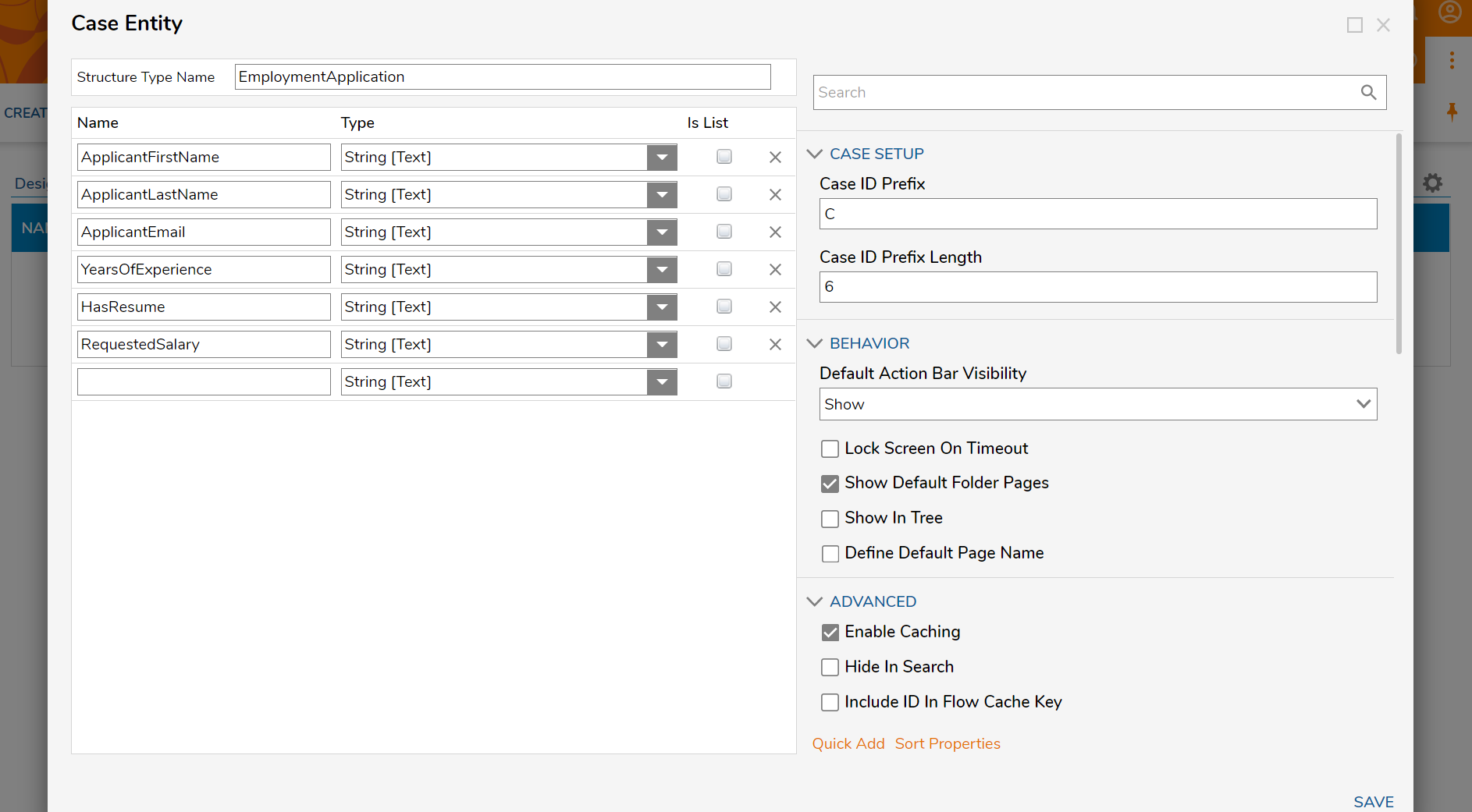
- Select SAVE to create the Case Entity.
Case Entity Creation Settings
| CASE SETUP | ||
| Case ID Prefix | Adds a prefix character to the Case ID | |
| Case ID Prefix Length | Specifies the length of the Case ID | |
| BEHAVIOR | ||
| Default Action Bar Visibility | Specifies how to action bar is displayed (Show, Collapse, Hide) | |
| Lock Screen On Timeout | Locks the screen when timeout period as started | |
| Show Default Folder Pages | Displays the default folder | |
| Show In Tree | Displays the Folder Extension in the Folder Tree | |
| Define Default Page Name | Specifies the default page name | |
| ADVANCED | ||
| Enable Caching | Enables the Entity to be loaded into the cache | |
| Hide In Search | Hides the data type from appearing when being searched | |
| Include ID In Flow Cache Key | Adds the GUID to the Cache Step Key for easier searching | |
| Type Name Space | Creates the unique identifier for the Entity (namespace.typename) to generate the SQL table name for the Entity (namespace_typename) | |
| Audit Changes | Saves changes to Entity data in the Audited Entities table. This option is used when data monitoring is required for this Entity | |
| Category Order | Allows data field categories to be organized by the Designer. | |
| Include Type Name In Description | This enables or disables the visibility of the Type namespace | |
| ACTIONS | ||
| Show Add With Data | Displays the Add With Data action | |
| Override Create Action Name | Allows user to specify a different name for the Create action | |
| Show Description On Add | Displays the description on the Create window | |
| Add Category Name | Allows a Category name to be specified | |
| Add Sub Category Name | Allows a Sub Category Name | |
| Show Delete Action | Displays Delete action | |
| Show Edit Action | Displays Edit action | |
| Show Add Comment | Displays Add Comment action | |
| Show Add Document | Displays Add Document action | |
| Show Manage Permissions | Displays ability to manage permissions | |
| Show Move Folder | Displays Move Folder action | |
| Show Add Sub Folder | Displays Add Sub Folder action | |
| Show Add ToDo | Displays Add ToDo action | |
| Show Change Name | Displays the ability to Change Name | |
| Show Change State Action | Displays Change State action | |
State Configuration
Immediately after clicking SAVE, Decisions navigates to the Case Editor Page.
To add more states to the Data Structure click the ADD STATE button.
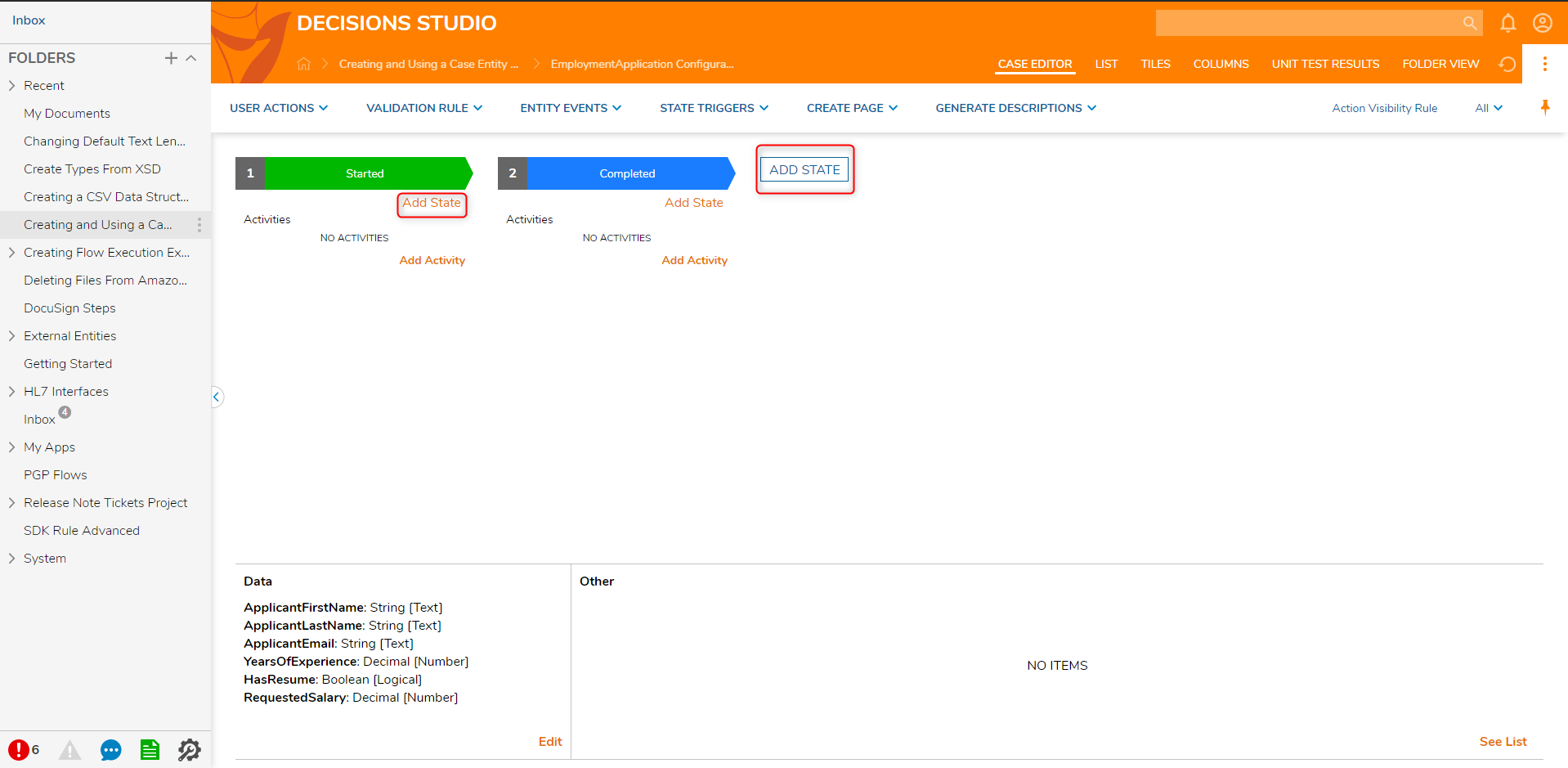
If states need to be rearranged, they can be moved by clicking the arrow that appears when the state is hovered over.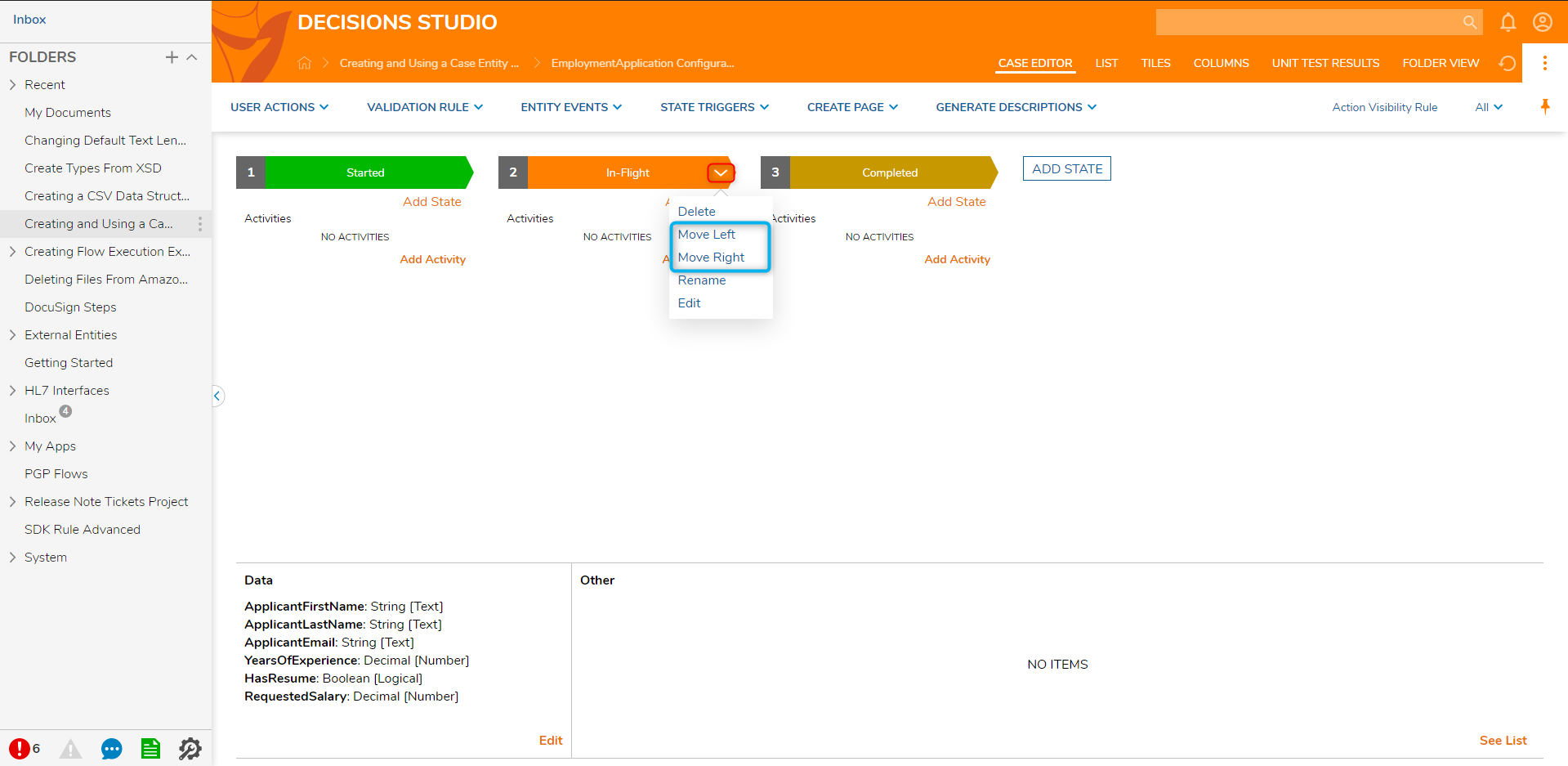
To edit the State hover over the State, click the dropdown arrow, and select Edit in the action menu. The Edit Expected State window will allow users to configure the Order, Color, Create Assignment, and Assign the state to accounts or groups.
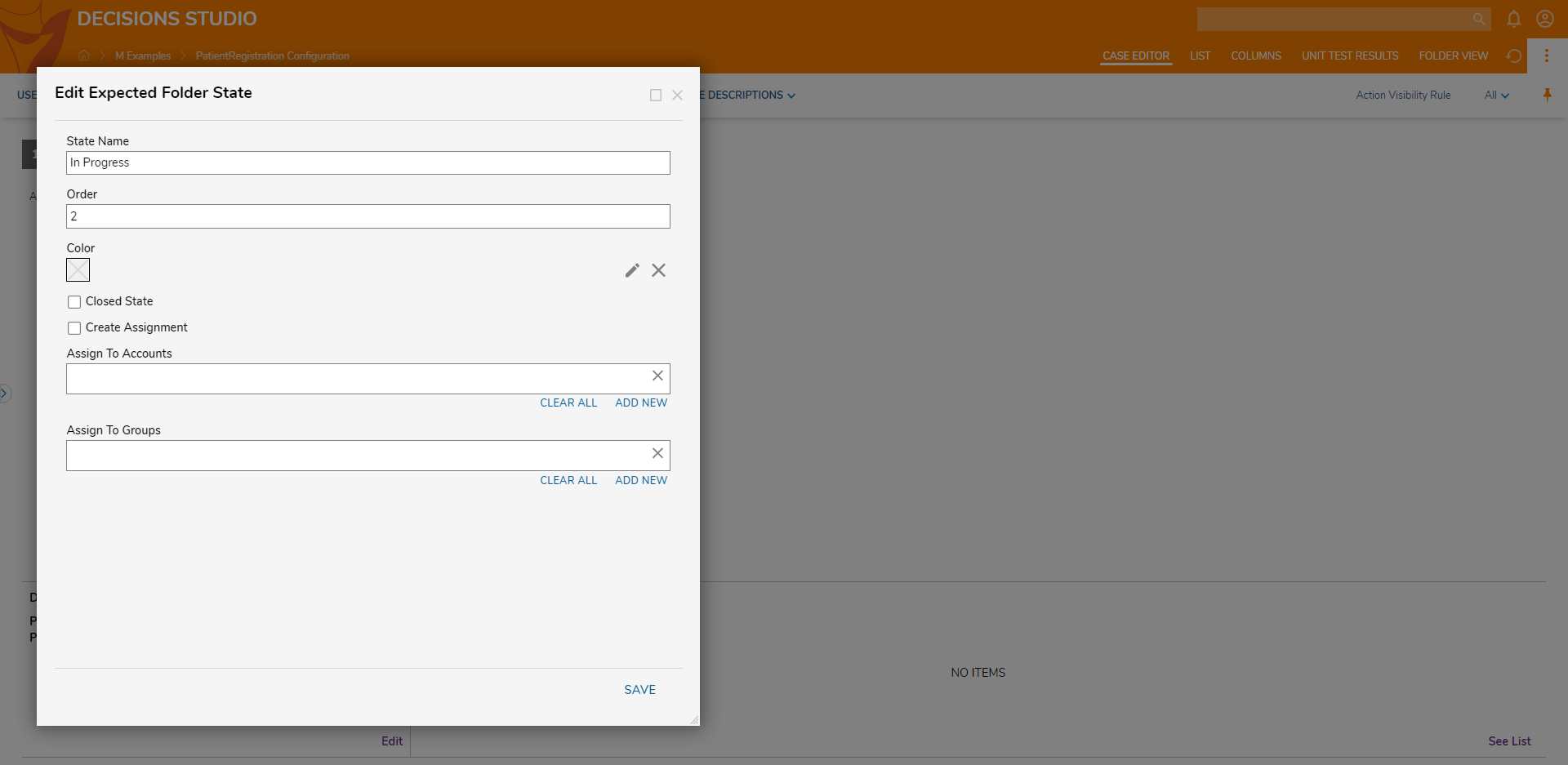
Add Activity
The next significant action in the Case Editor is the Add Activity action. When clicked on, this action will open a menu that contains two more actions called the User Action and Trigger Flow.
| Action Activity | Function |
|---|---|
| User Action | Are Flows that will be user right-clickable actions when the data is reported on
|
| Trigger Flows | Are Flows that will run when a Case Entity record enters that particular state
|
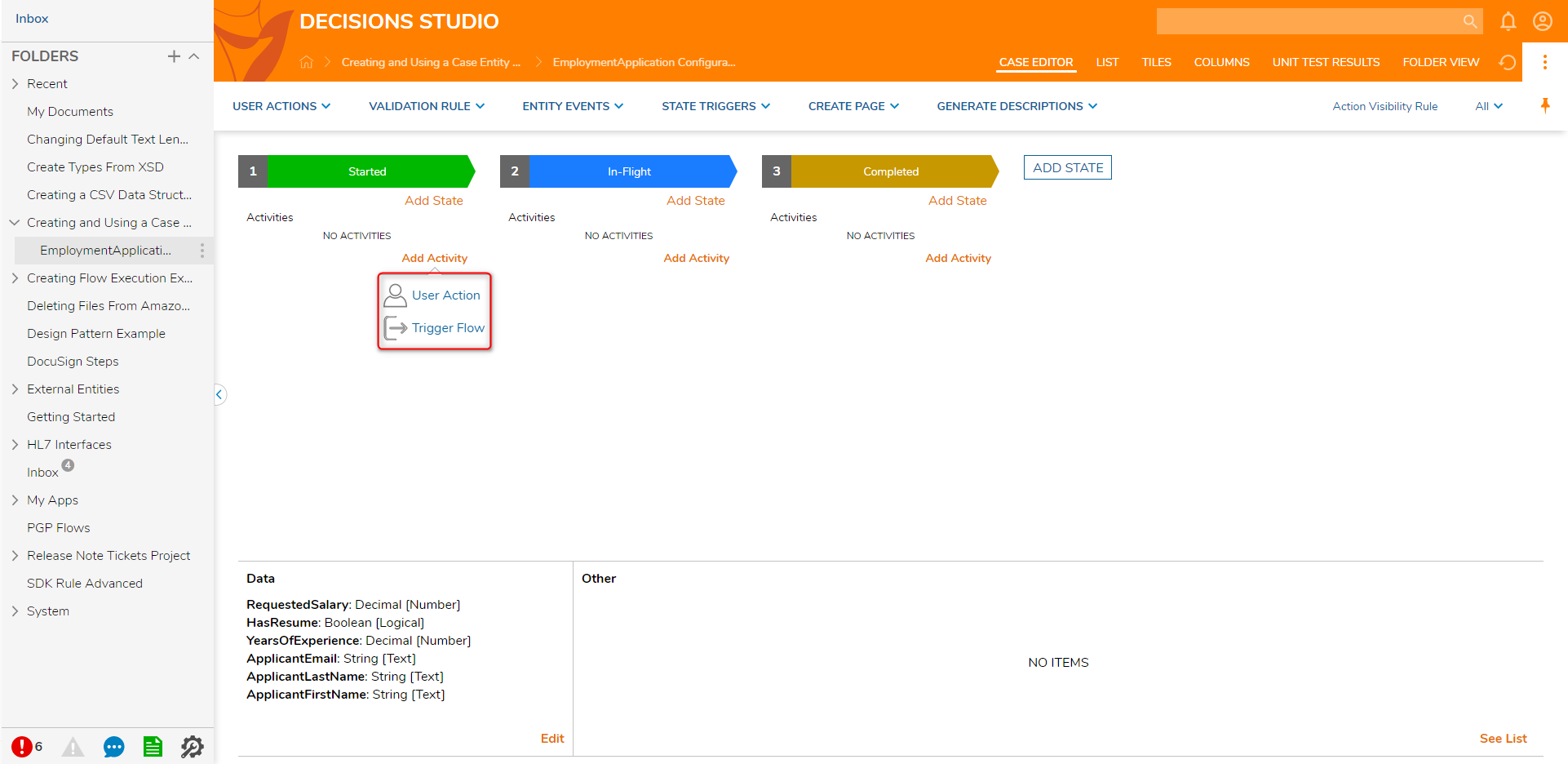
Trigger Flows
To illustrate Trigger Flows, create one via the Trigger Flow Action on the Started state.
- The Trigger Flow only contains an Add Comment step found in INTEGRATION > INTERNAL SERVICES > COMMENT > AddComment. Open its Properties tab.
- Declare Constant or Select From Flow input mappings for the Comment Name and Comment Description.
- On the entityid input, map in the FolderId variable.
- After these configurations, Save and close the Flow Designer.
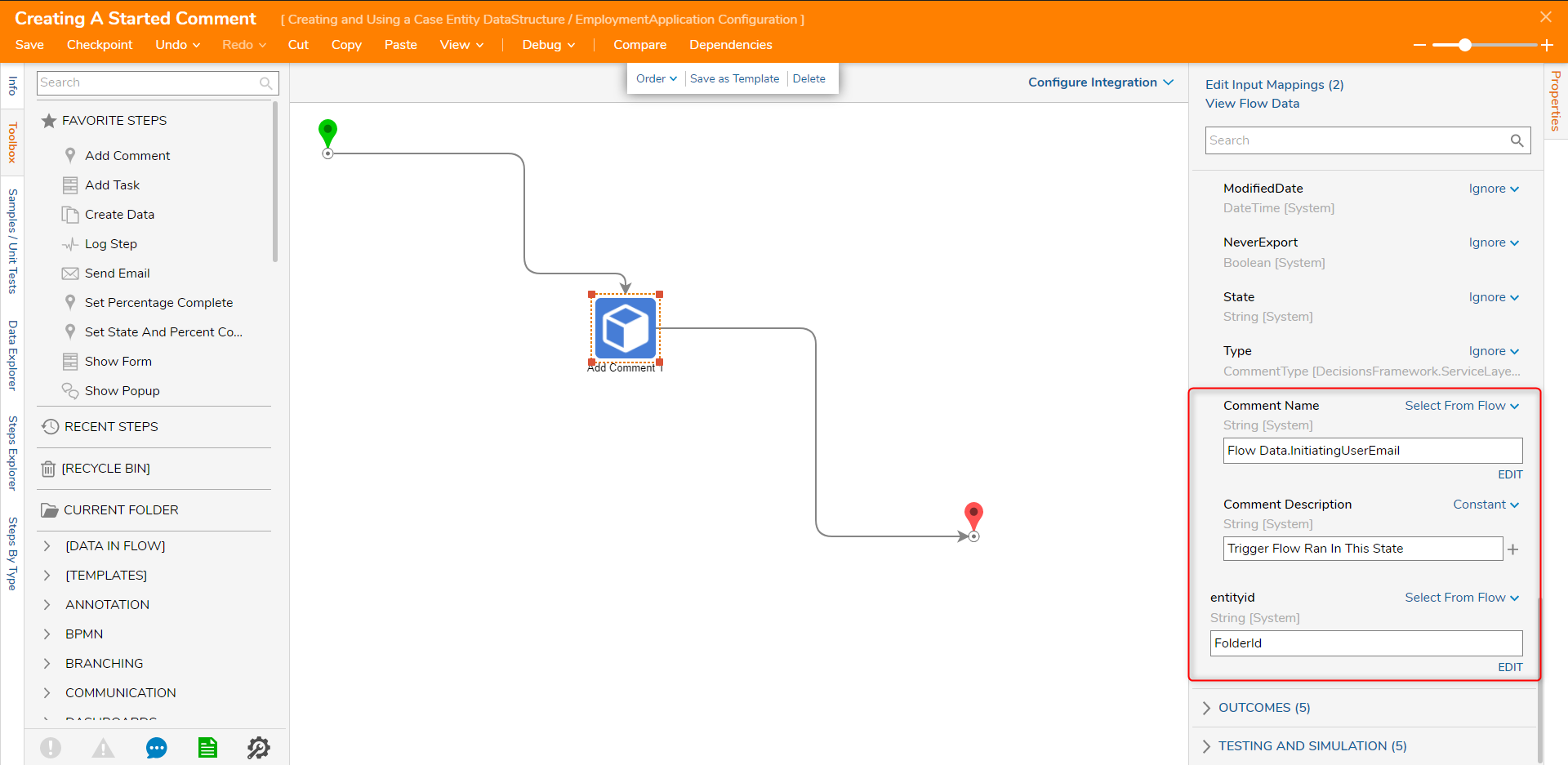
- Return to the Designer Folder and create a new Flow [Create Case Entity Record Flow]. This Flow will be used to create the Case Entity records.
- Within this Flow, navigate to the Case Entity category located in USER DEFINED TYPES > CASE ENTITIES and find the Create step for the user defined type.
- On the Extension Data input, set it to Build Data. Add some Constant values to the user-declared data fields.
- For the Parent Folder ID, set the input to a Constant and select a Folder that will create and contain new records.
- Once this is completed, Debug the Flow. Save and exit the Flow.

- Navigate to the selected Folder in step 8, and left-click on the created record's name to view the Case View page.
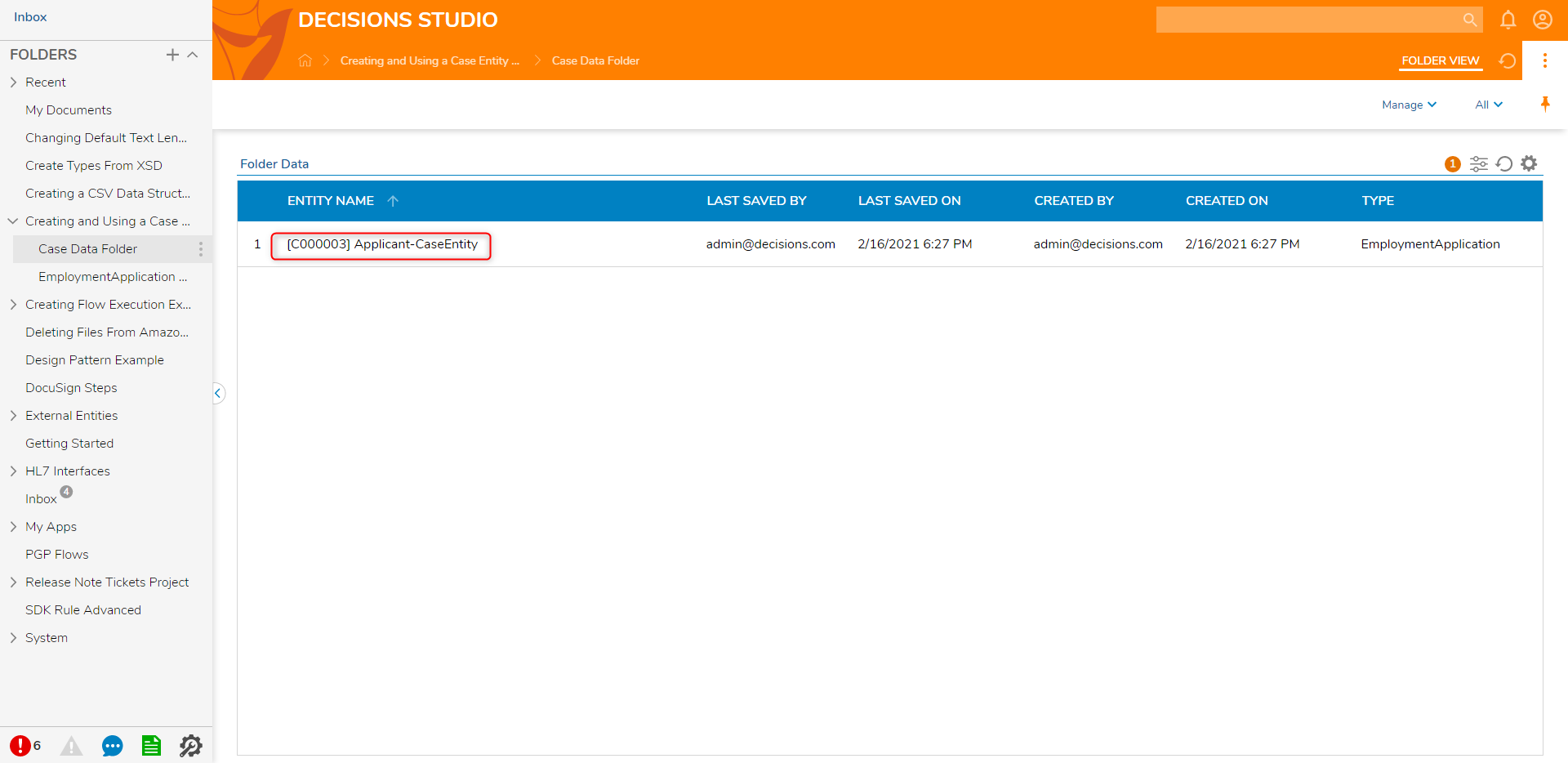
- This Case View Page on the Folder will have a Case Activity panel. Within that panel, the comment Trigger Flow ran since any created Case Entity record starts in the first 'Started' state thus any configured Trigger Flows will automatically run.Note on Case Activity Panel - Create Assignment CheckboxWhen viewing a case's activity panel, you can toggle the appearance of the "(Pending State Change)" comment in the case's future steps by enabling the Create Assignment checkbox. This setting is found when editing a state from the Case Editor Page. Changing this setting will not affect pre-existing cases, but new cases will respect the setting change.
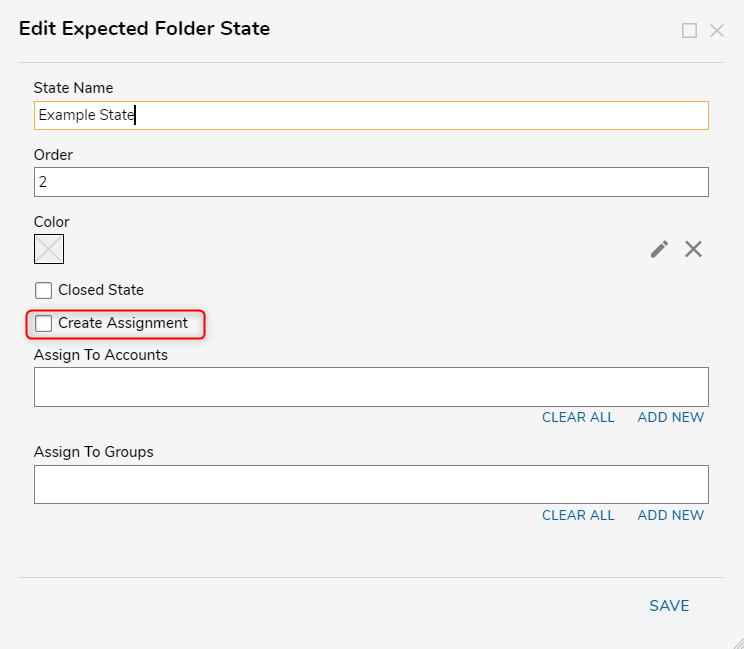

Horizontal Timeline Configuration
By default, v7.8+ instances utilize the Horizontal Timeline control by default to visualize State changes in a Case Entity's process.
The following tutorial demonstrates how to change the Horizontal Timeline in the Case Editor to display States as chevrons.
- Create a Page and open it in the Page Designer.
- Search for the Horizontal Timeline in the Toolbox. Drag it onto the Page and navigate to Properties > View to locate the Use Chevron Design checkbox.
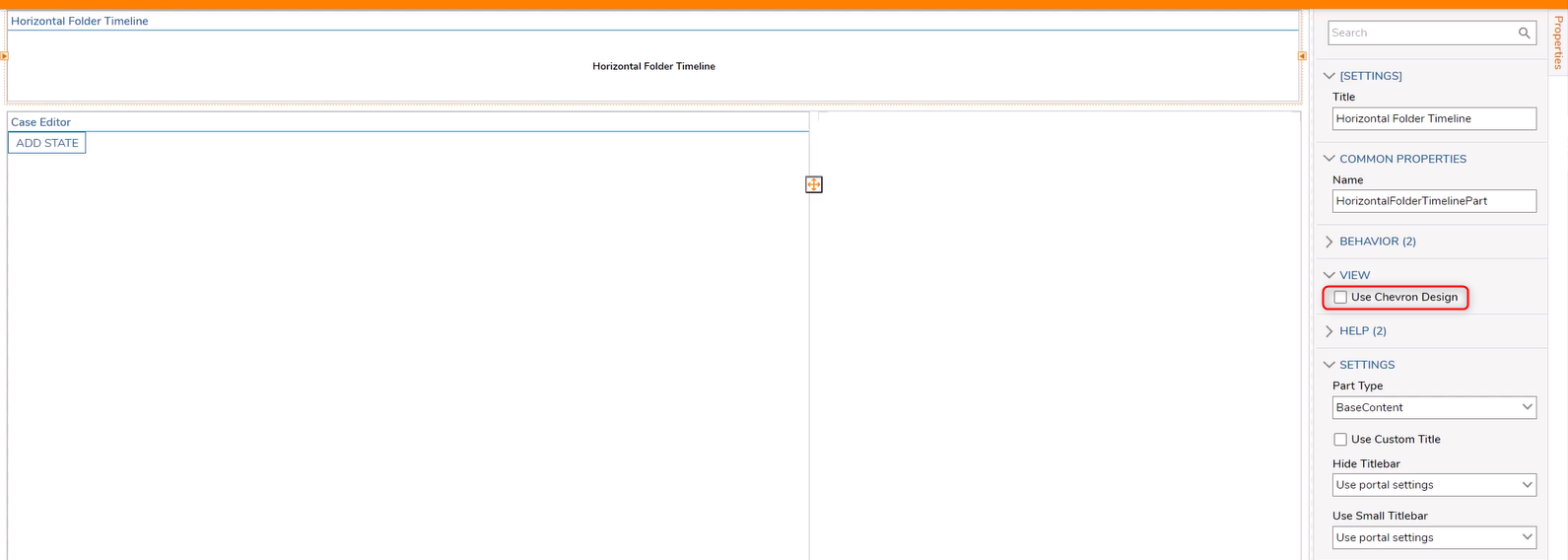
- Enable this checkbox to change the view of the Horizontal Timeline as shown below.

State Timeline Configuration
The following tutorial demonstrates how to update the Case Editor Page with another visual State Timeline configuration.
- On the Process View (Case View) Page, navigate to the Global Action Bar and search for the Default Process View Page. Select the first option.
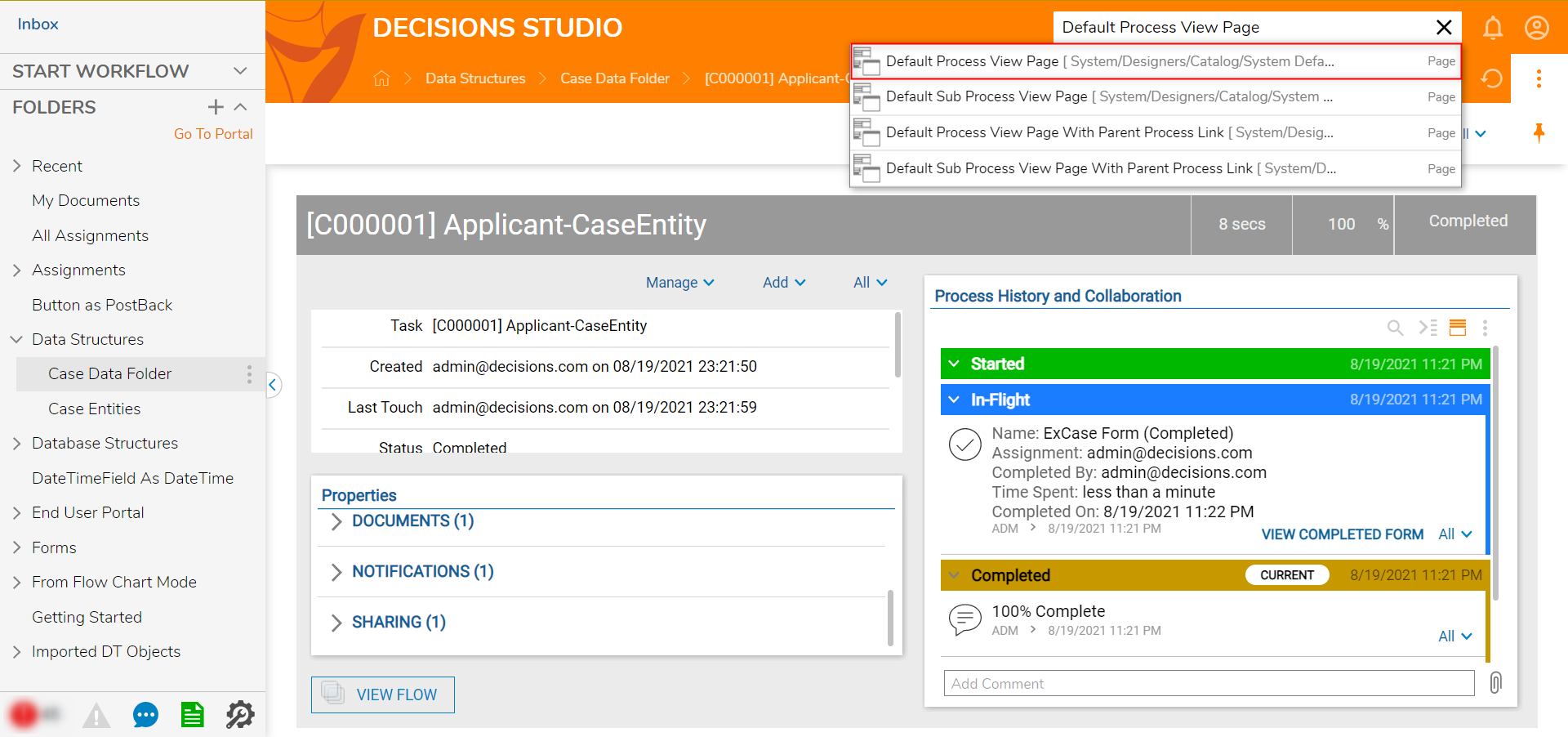
- In the Page Designer, remove any unneeded information from the top gray bar.
- Next, locate the State Timeline control from the Toolbox > DATA > FOLDER section and place it in the empty gray space. This process inherits the State process data automatically.
- Save and close this Page Designer.
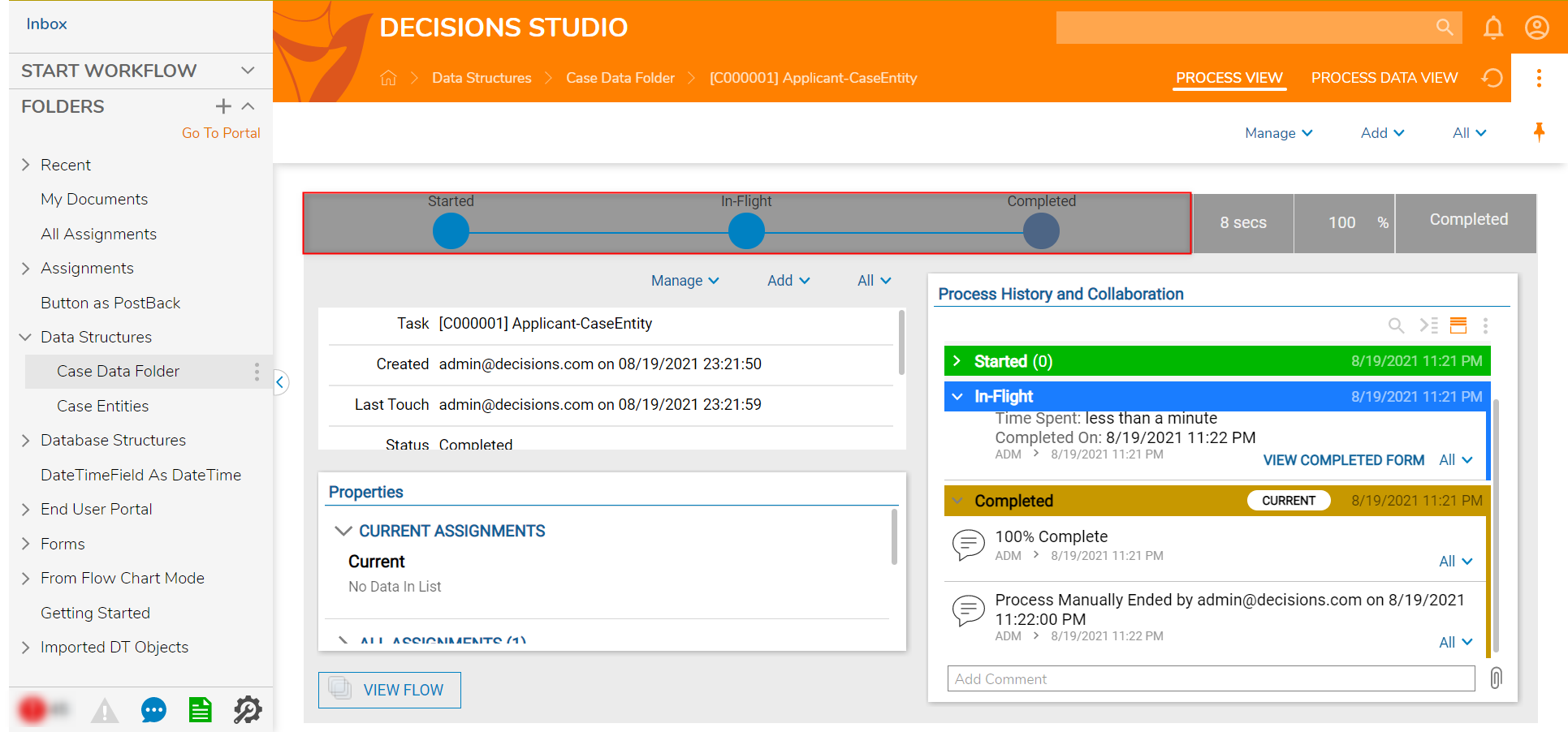
Hiding the Actions Bar in the Case View
After creating data for a Case Entity, it can be viewed in the Folder in the Case View.
In the Case View, the Actions Bar's view can be edited the Default Action Bar Visibility setting either upon Case Entity creation or edited later in the Edit Case Entity window. Changing this setting effects all data even those created before the change.
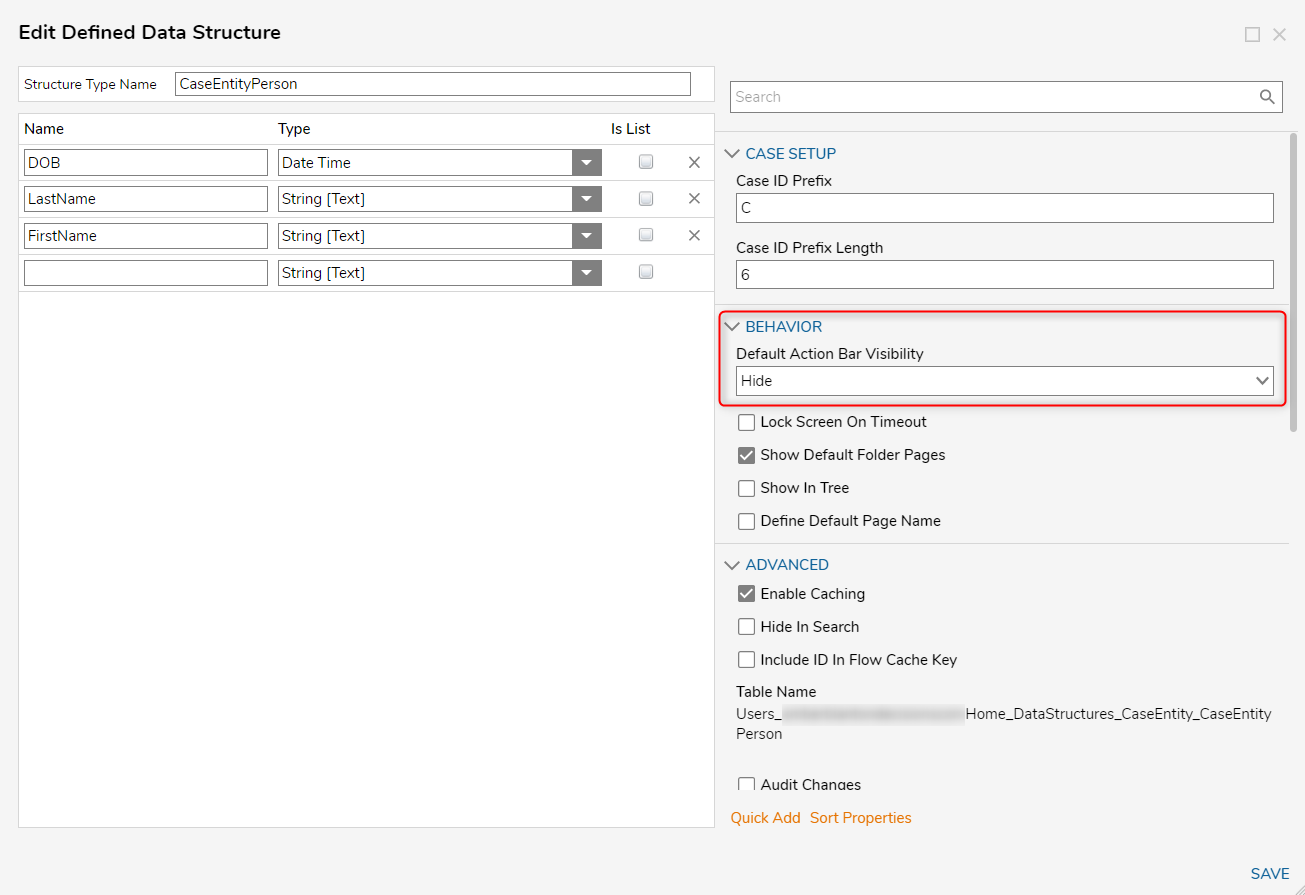
| Action Bar Visibility Option | Description |
|---|---|
| Show | The Action Bar appears underneath the orange banner similar to the Folder view. |
| Collapse | The Action Bar appears by default, but it may be collapsed |
| Hide | The Action Bar is hidden from the Case View. |